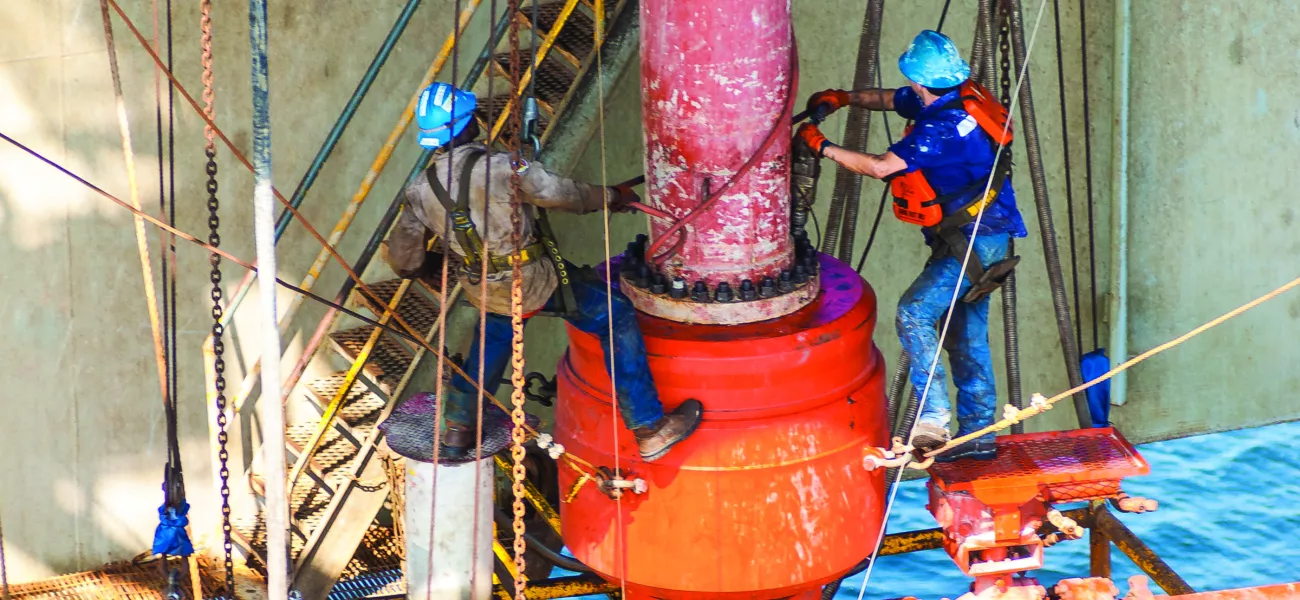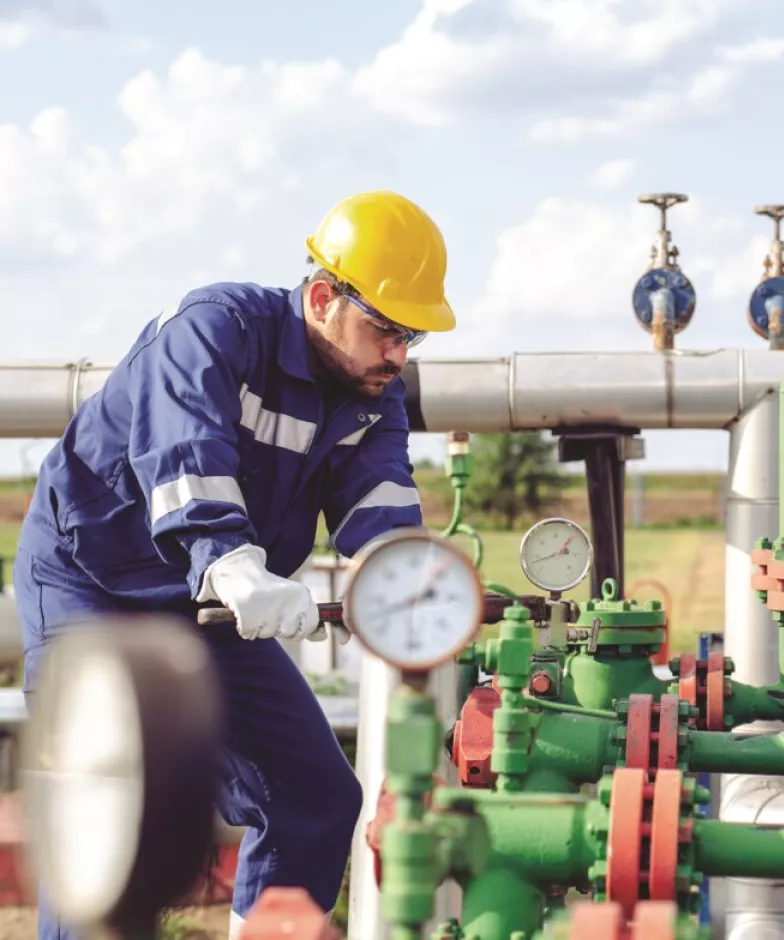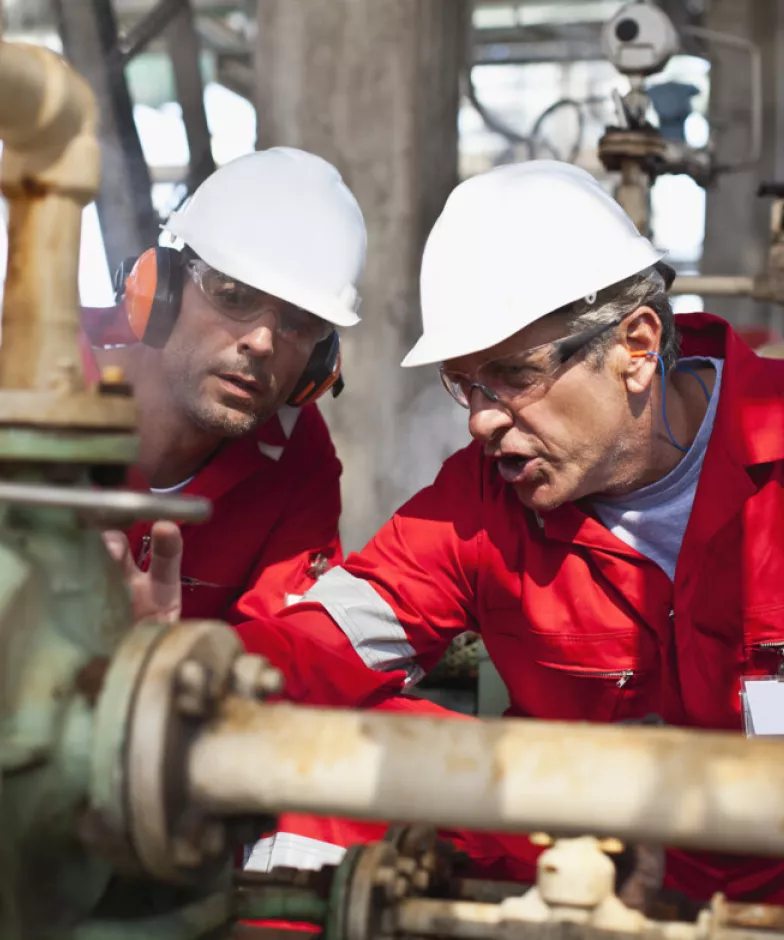
The oil and gas industry presents some of the most challenging and hazardous environments for workers globally. As with all critical infrastructure sectors, health and safety is a priority. Network video and audio solutions can be put in place to pre-emptively reduce worker accidents, protecting human lives and improving operational efficiency throughout the entire supply chain.
Its name highlights its importance. Critical infrastructure is defined as those systems, networks, and assets that are essential for the functioning of society and the economy. Among these, the oil and gas industry plays a pivotal role, and naturally, ensuring the health and safety of its workforce is a top priority. First and foremost, a proactive stance towards health and safety is imperative to protect lives, while helping to maximize business continuity – the same oversights that endanger workers also cost businesses time and money when workers are injured or fines issued. With operations taking place in harsh and precarious environments, safety measures must be both pre-emptive and intelligent.
In this post, we explore how intelligent network video and audio solutions can enhance worker safety, help prevent accidents and enable a safer work environment across the entire oil and gas supply chain.
Responsibility lies with the employer
Last year, of 24 drilling contractors surveyed, 956 incidents were reported, indicating the high risk nature of the oil and gas industry. Drilling is especially hazardous, and workers are regularly faced with fire, high-pressure equipment, and toxic gases, with risks ranging from heat stress to hypothermia. Wellheads, often in remote areas, need constant monitoring despite being unmanned, while processing plants, many of which house hazardous areas require strict safety measures and real-time awareness. Even the transportation of oil via pipelines or tankers carries serious risks including spills, explosions and worker accidents.
Given this high-risk setting, employers have a legal and ethical obligation to deliver worker safety. Strict safety regulations set by organizations like Occupational Safety and Health Administration (OSHA) and International Association of Oil & Gas Producers (IOGP) require companies to take proactive measures to protect employees from workplace hazards. Failure to comply with safety regulations can result in significant legal penalties, lawsuits and loss of operational licenses but also detrimental financial losses and reputational damage.
Minimizing safety risks in harsh environments
There is a clear need for high quality visual coverage to support and enhance in-person spot-checks. Network cameras not only enable detection of real-time incidents and handling of urgent situations safely and efficiently, but they are also able to identify and respond proactively to risks in the near future. Because this improved visual awareness can be used to analyze and improve safety practices and protocols, these capabilities raise the bar for the long-term safety and profitability of the site. In addition, network audio can also be introduced as a useful tool to mitigate risk and prevent injuries with live or pre-recorded messages.
By employing network video monitoring solutions, companies can actively identify and reduce the risks to employees in unpredictable environments. Weather-resistant and rugged network cameras, and other network devices such as radars, can continuously monitor sites in extreme conditions, providing high resolution images even in low light. Certain sites pose a considerably heightened risk for humans, particularly when dealing with combustible substances. Explosion-protected cameras and audio equipment also prevent ignition risks and can help monitor hazardous areas which are unsafe for human access.
Integrating network monitoring with AI-powered analytics supports worker safety by detecting hazards, reducing human error and ultimately enabling faster decision-making across the entire supply chain. This is especially true when integrating AI-powered cameras with additional devices such as access control systems and network audio. Through centralized control rooms you can oversee multiple sites at once helping to enhance efficiencies in terms of staffing and monitoring and increasing situational awareness.
One point to be aware of is that increased monitoring often comes with concerns regarding privacy. Fortunately, different static and dynamic masking options and the possibility of video redaction can put minds at ease and allow companies to adhere to strict data privacy requirements.
Real-time awareness in case of the unexpected

Sometimes, the unexpected happens no matter how proactive the approach. In those cases, a quick, well-informed response can save lives. Network cameras coupled with analytics can provide the remote access and awareness needed to react instantly, whether that means identifying someone who has fallen down or become injured, emerging smoke or fire, or leaks in their earliest stages:
- Man down alerts – For lone workers or high-risk areas, AI-powered analytics can detect slips, falls, or collapses, triggering immediate alerts.
- Early fire prevention – By complementing fire systems for faster intervention, cameras with AI-powered analytics can be trained to recognize smoke and early fire signs.
- Leak and spill detection – Thermal imaging or visual cameras with AI-powered analytics can detect leaks in pipelines, tanks and processes, reducing both safety issues and environmental risks.
- Rapid evacuations – Network cameras can complement emergency systems by providing real-time emergency insights and supporting response efforts by tracking evacuation progress.
Near-future risk management to support preventative measures

Today, it’s possible to prevent accidents and incidents in the oil and gas industry before they even occur, thanks to near-future risk management. By leveraging AI and accessing real-time data from network cameras, operators can detect potential hazards in advance and step in to protect workers and ensure smooth operations.
For example, let’s consider Personal Protective Equipment (PPE) compliance. Cameras equipped with AI-powered analytics can alert supervisors to workers not wearing the right equipment and help ensure safety standards. By integrating these cameras with horn speakers corrective messages can be issued automatically, while access control systems can deny entry to anyone without proper PPE before an incident occurs.
In some instances, visual inspection isn’t enough to detect the early warning signs of machinery dysfunction. Thermal imaging can help to identify risks of gas leaks, corrosion, and pipeline weaknesses through early detection. Small temperature changes in machinery can indicate issues that are invisible to the naked eye. By alerting operators to the need for prompt maintenance you can prevent blowouts, fires, and pressure build-ups.
From a planning perspective, it’s important to be able to identify and monitor high-risk areas effectively to prevent personnel from gaining access. You can use cameras with AI-powered analytics to not only detect if a worker enters a predetermined hazardous zone or restricted area but also trigger equipment shutdowns and issue audio or visual warnings to reduce accident risks. This is also true for identifying blocked exits in advance of an incident occurring. By triggering automatic alerts via horn speakers as soon as an exit is blocked, safe evacuation paths and regulatory compliance can be maintained before they are needed.
Driving lasting safety improvements

Enhanced visual coverage can also be analyzed to improve safety practices and protocols. Identifying where issues can or do occur is the first step in creating a safer workplace, not only for the people involved, but also the surrounding environment. With this in mind, carefully reviewing recorded footage and logged alerts can be a valuable process for objectively evaluating existing policies and processes to reduce risks and achieve future-proofed safety improvements. Pinpointing areas of low regulatory compliance provides insights into necessary changes to make in future, such as refining policies, retraining employees or installing cameras to cover new areas or blind spots.
Finally, utilizing recorded footage is a powerful tool for employee training. Demonstrating how incidents happen, or almost happen and how proper policies could have prevented them strengthens safety awareness and education. At the same time, implementing comprehensive camera monitoring solutions helps employers verify compliance with safety protocols and demonstrate due diligence in preventing workplace hazards throughout the supply chain.
Taking the next step in worker safety
Like most sectors, the oil and gas industry is constantly evolving. As such, intelligent monitoring solutions can help companies stay ahead of the curve and play an essential role in enhancing worker safety, reducing hazards, and preventing accidents. By integrating cameras with AI-powered analytics, thermal imaging, and real-time alerts, employers can ensure their workforce is in safe hands and create a more secure working environment for all.
